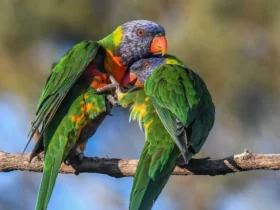Among the myriad wonders of the avian world, few can match the extraordinary beauty and grace of the Wilson’s Bird-of-Paradise. Named after the famous American ornithologist Alexander Wilson, this remarkable bird captivates with its vibrant colors and intricate plumage, making it one of the most beautiful bird species in the world and a true symbol of the natural world’s artistry.
Wilson’s Bird-of-Paradise images
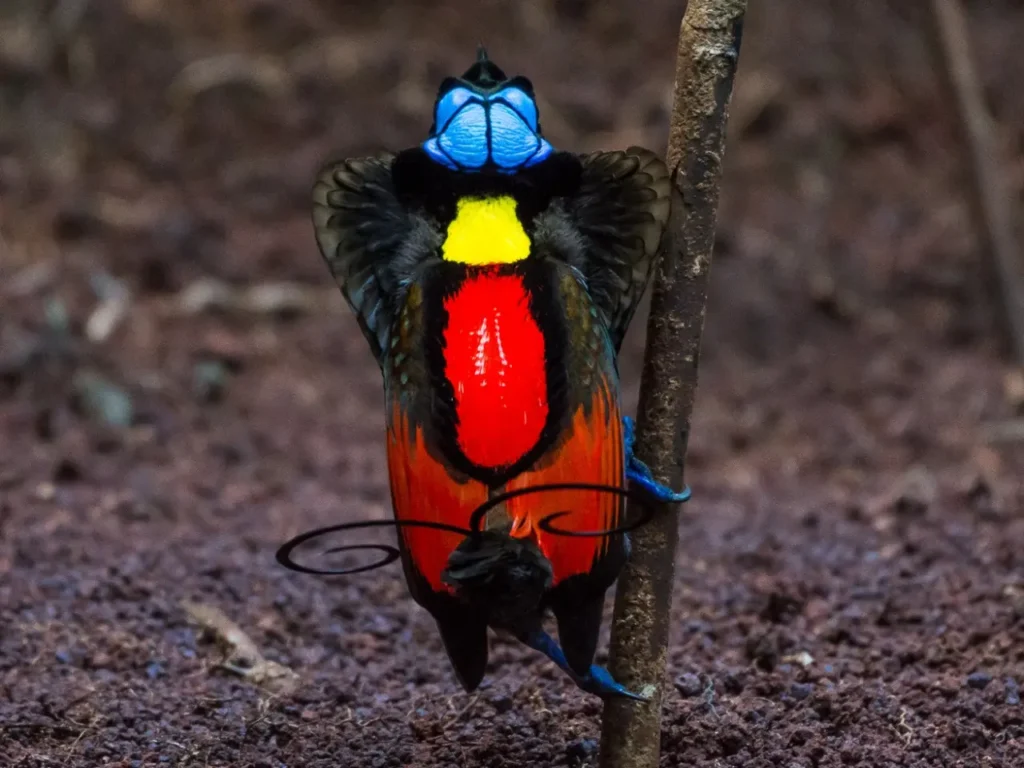

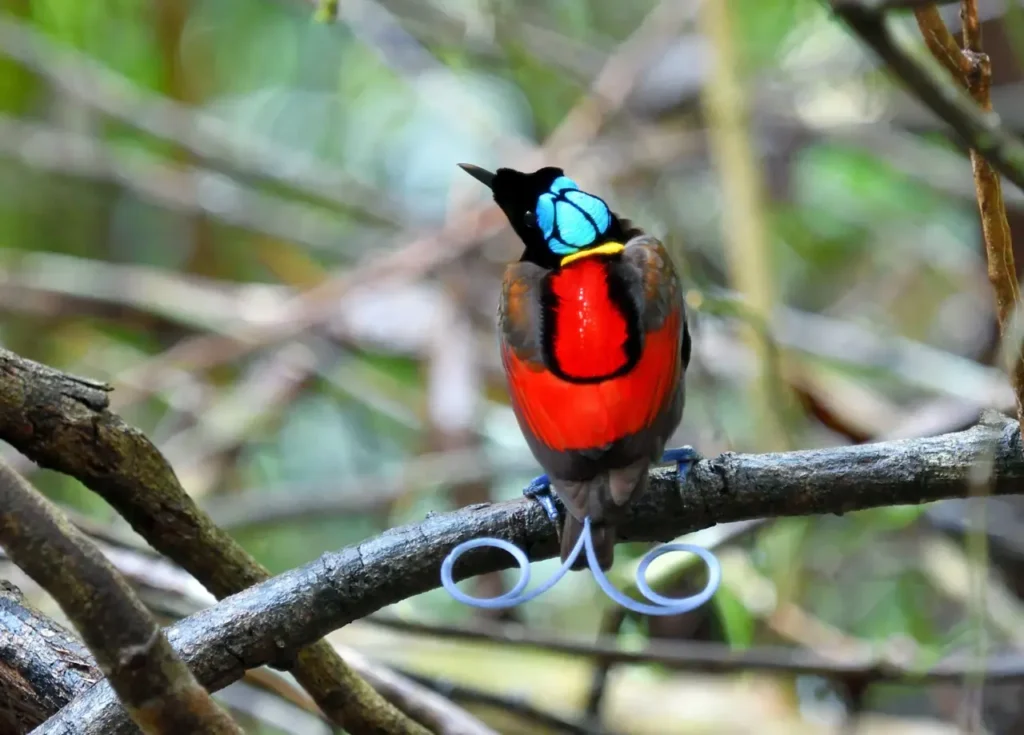
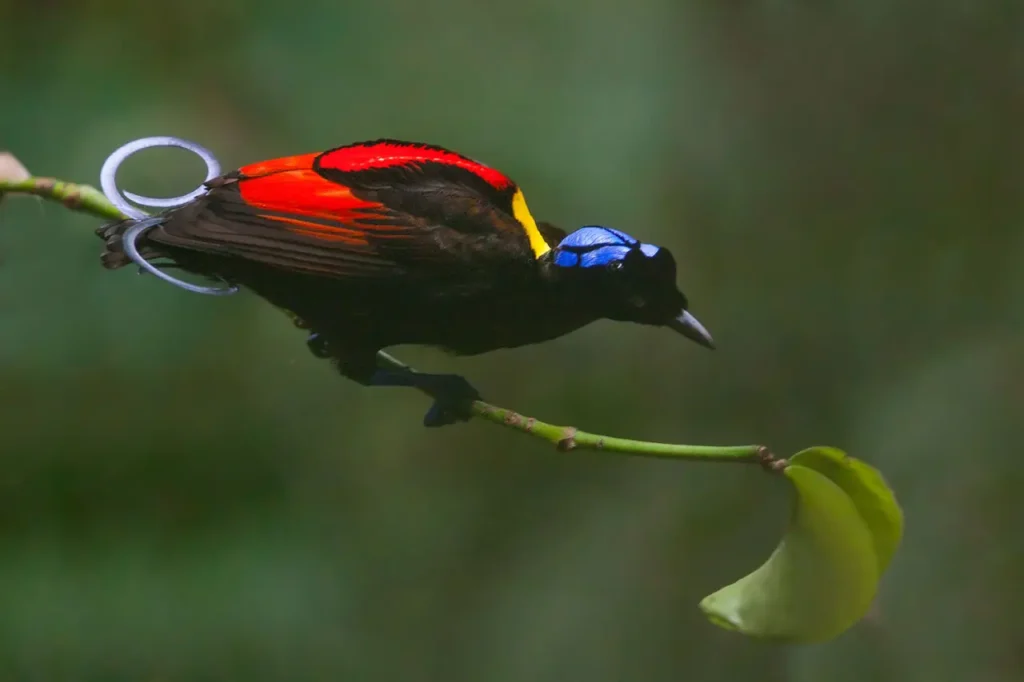
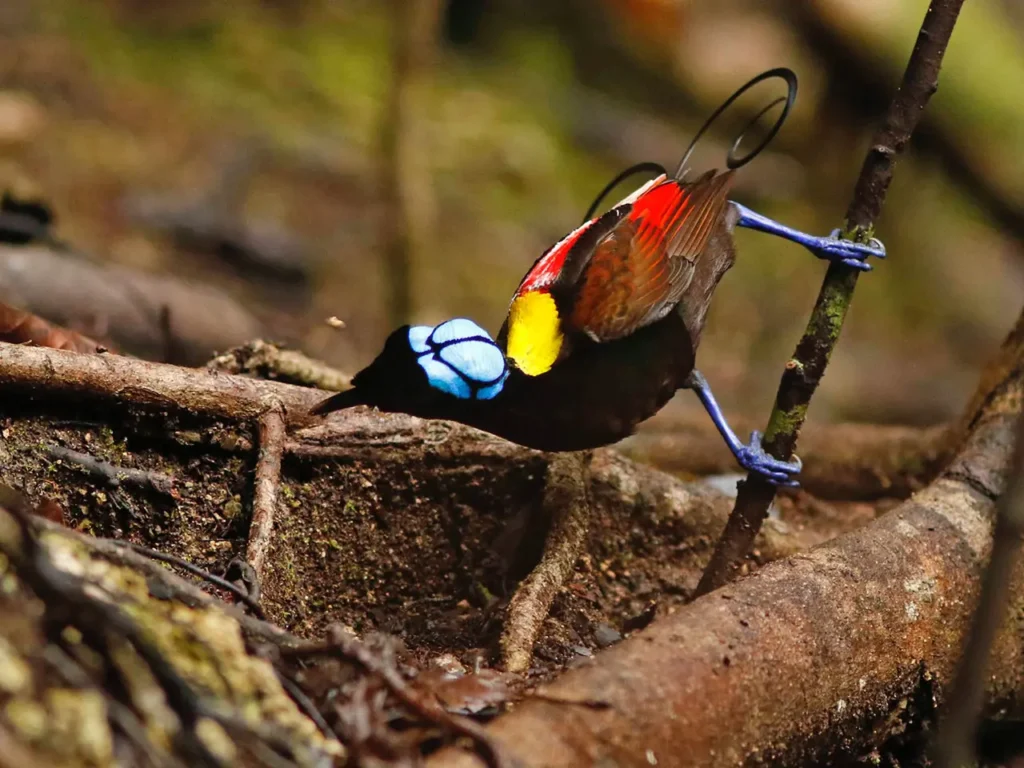
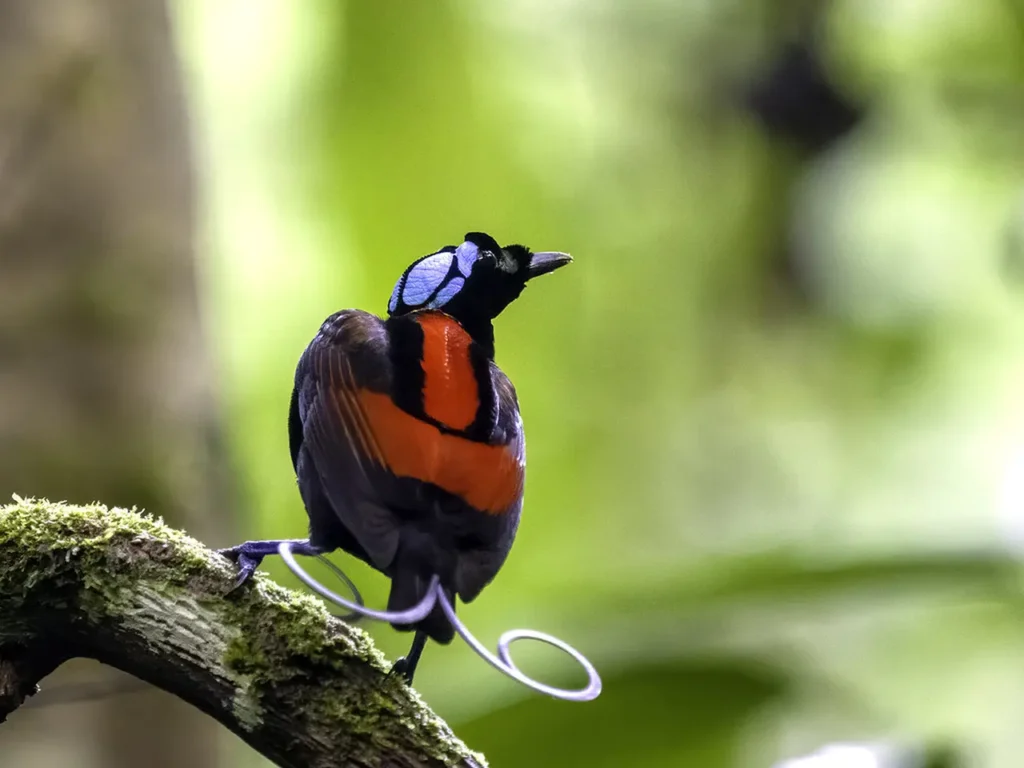
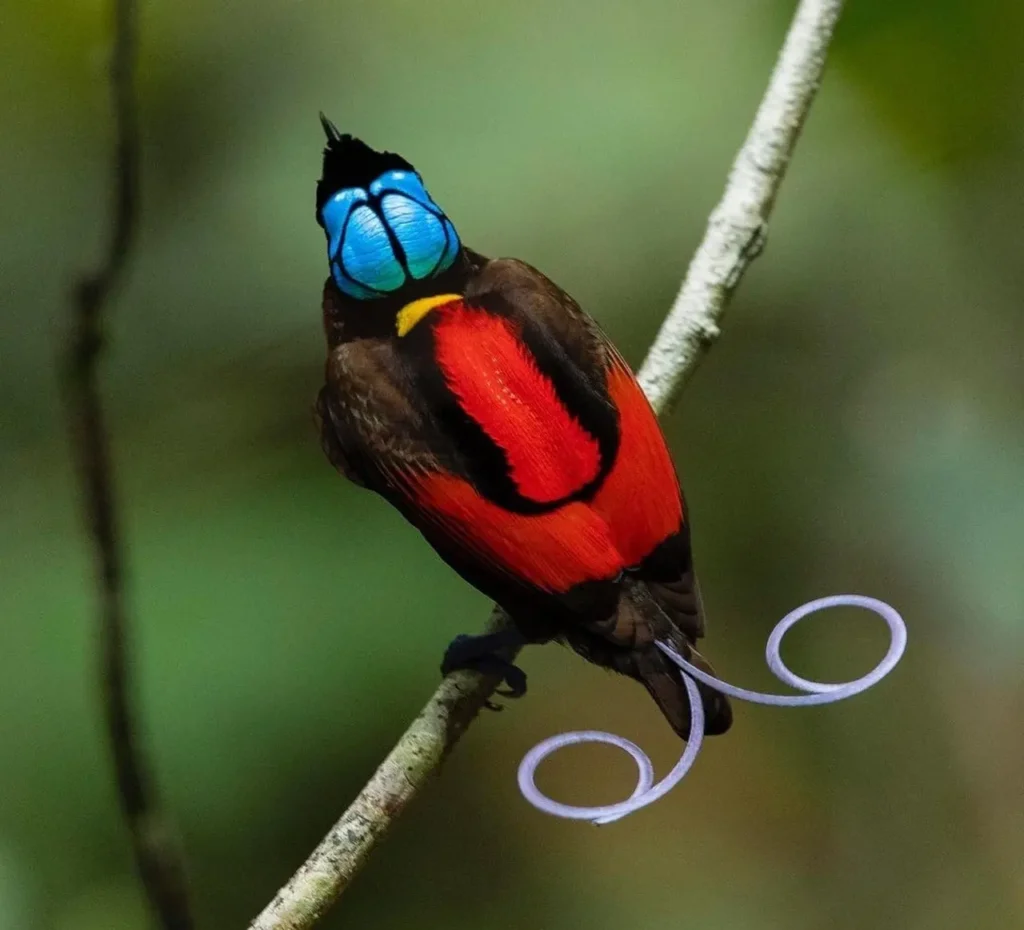
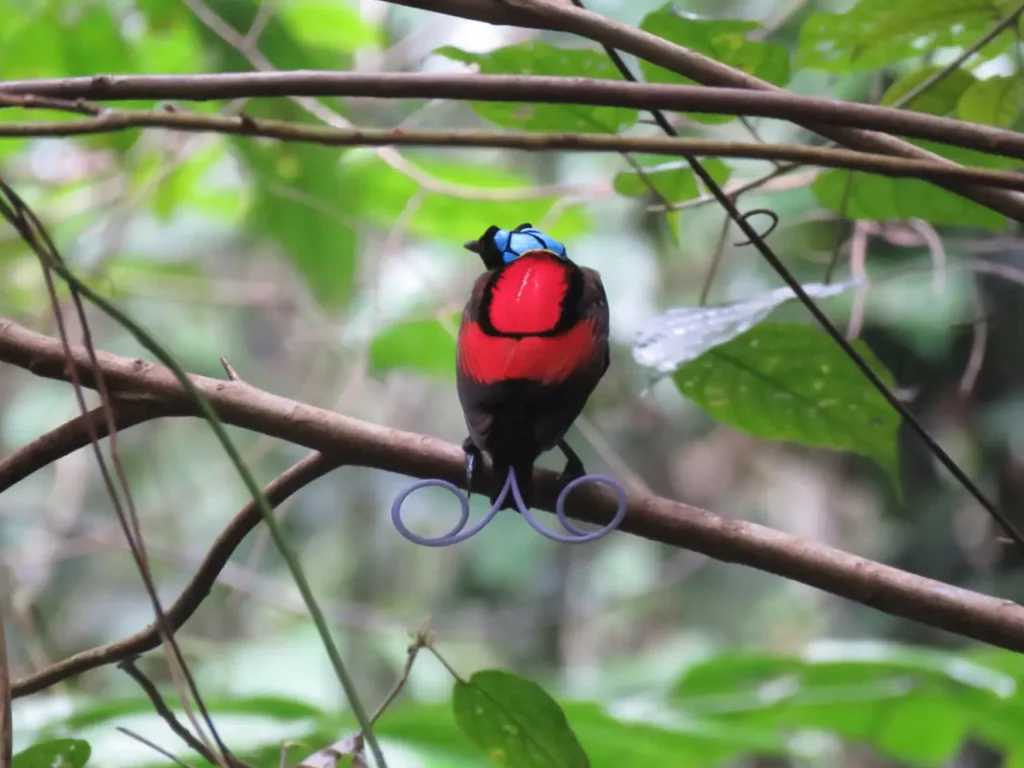
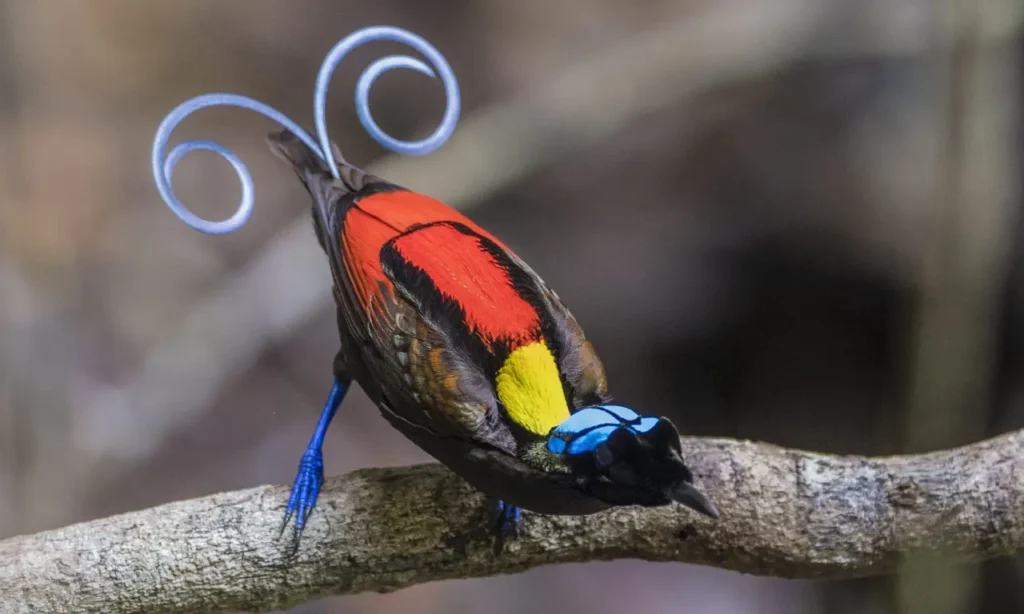
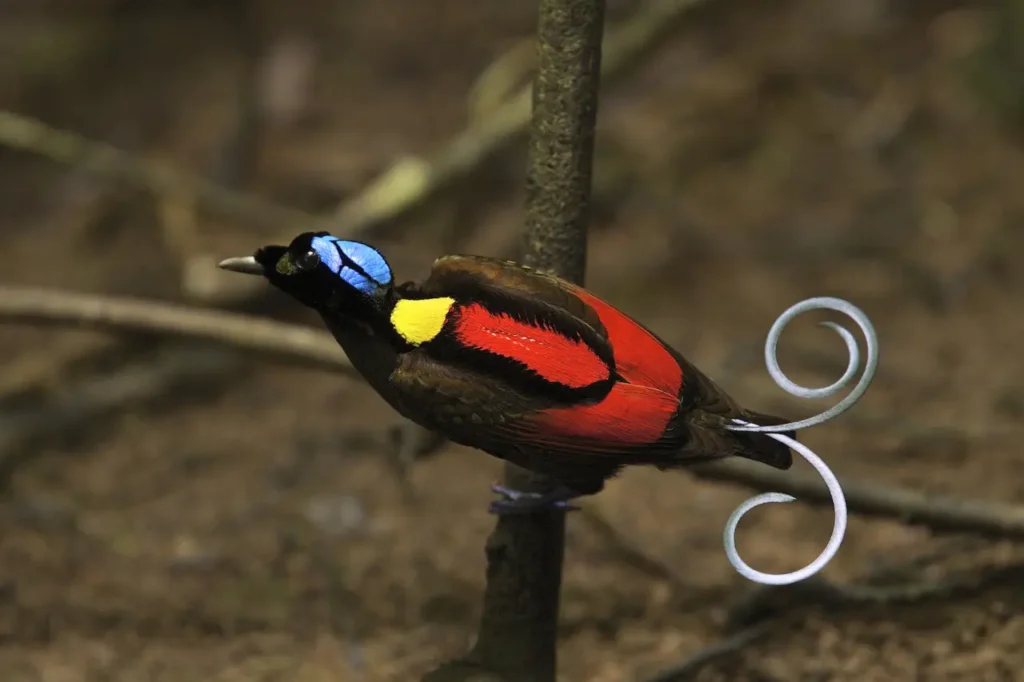
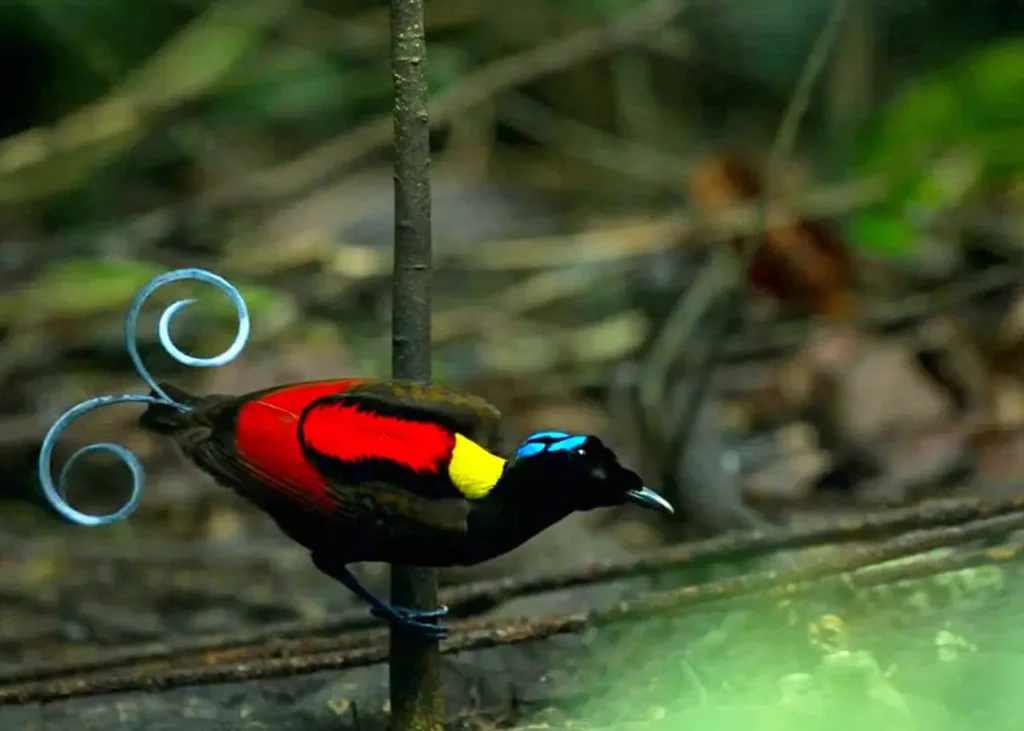
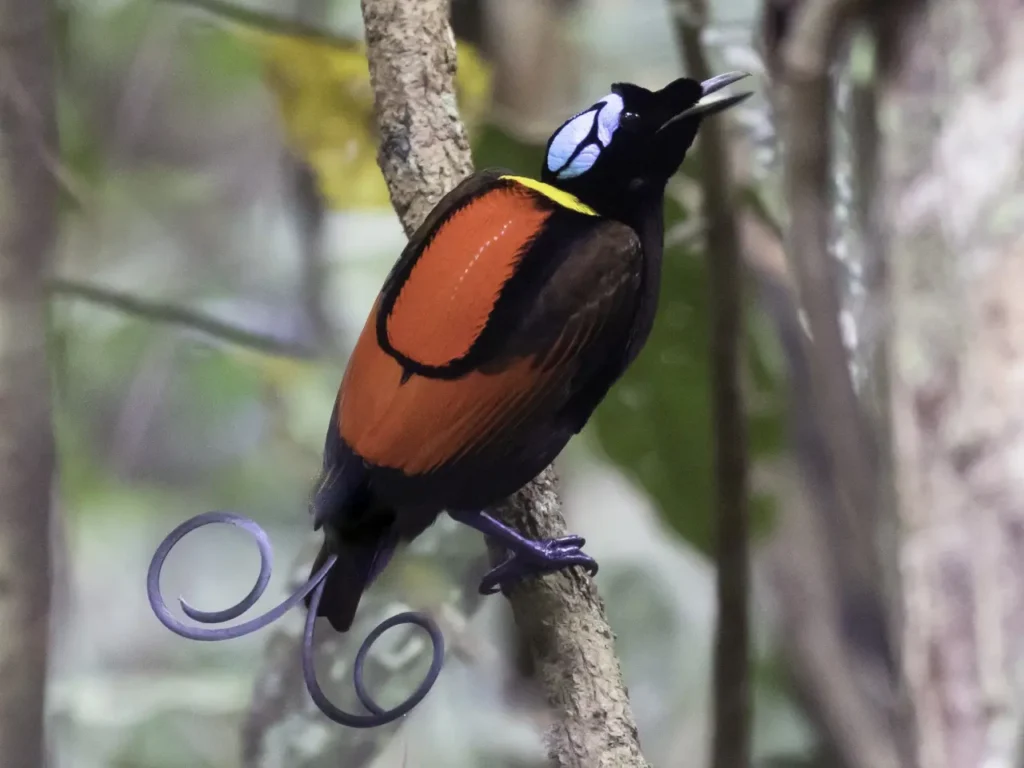
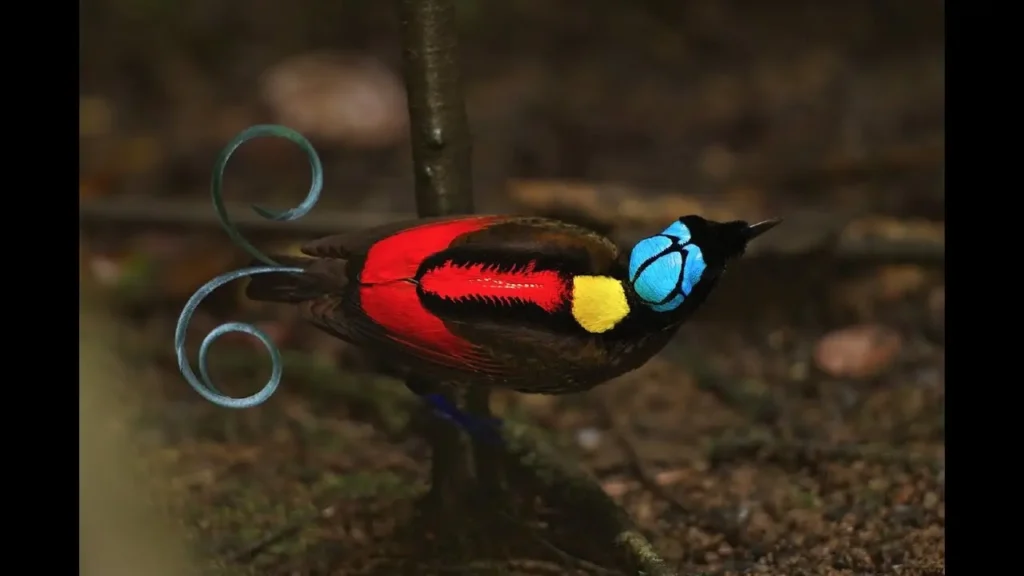
Facts about Wilson’s Bird-of-Paradise
Scientifically known as Cicinnurus respublica, the Wilson’s Bird-of-Paradise is native to the remote rainforests of Indonesia, specifically the islands of Waigeo and Batanta in West Papua. It is a member of the Paradisaeidae family, renowned for its stunning displays during courtship rituals.
The male Wilson’s Bird-of-Paradise boasts a truly mesmerizing appearance. With a velvety black plumage covering most of its body, it is adorned with a striking turquoise crown atop its head. Delicate, elongated feathers cascade from its back, resembling a cascading cape of deep orange, while its breast showcases an exquisite blend of rich red and iridescent green. The combination of these colors creates a kaleidoscope of hues that seem to change with the bird’s every movement, leaving observers in awe of its sheer beauty.
During courtship displays, the male Wilson’s Bird-of-Paradise transforms into a living work of art. In an elaborate performance, he erects his magnificent feathers, arches his wings, and dances with rhythmic steps, creating an enchanting spectacle. The bird’s movements are precise and deliberate, accentuating the intricate patterns and vibrant colors of its plumage. This display is a testament to the bird’s evolutionary adaptation to attract a mate, showcasing its genetic fitness and ability to provide for offspring.
The females, in contrast, exhibit a more modest appearance. Their plumage is mainly a soft, olive-brown color, allowing them to blend seamlessly into the dense foliage of the rainforest. This natural camouflage serves as protection, enabling them to navigate their environment and care for their young without drawing attention to themselves.
The Wilson’s Bird-of-Paradise inhabits the lowland rainforests, where it feeds on fruits, insects, and small arthropods. It is primarily a solitary bird, with males maintaining territories and performing their elaborate displays to attract females. Due to its preference for undisturbed habitats, this species faces threats from deforestation and habitat destruction caused by human activities. Conservation efforts and sustainable land management practices are essential to preserve the fragile ecosystems that support the survival of these remarkable birds.
Encountering the Wilson’s Bird-of-Paradise in its natural habitat is an experience that leaves a lasting impression. Its radiant colors, intricate displays, and otherworldly beauty transport observers to a realm where nature’s artistry unfolds. By appreciating and safeguarding these exceptional creatures, we contribute to the conservation of biodiversity and ensure that future generations can marvel at the splendor of the Wilson’s Bird-of-Paradise.
